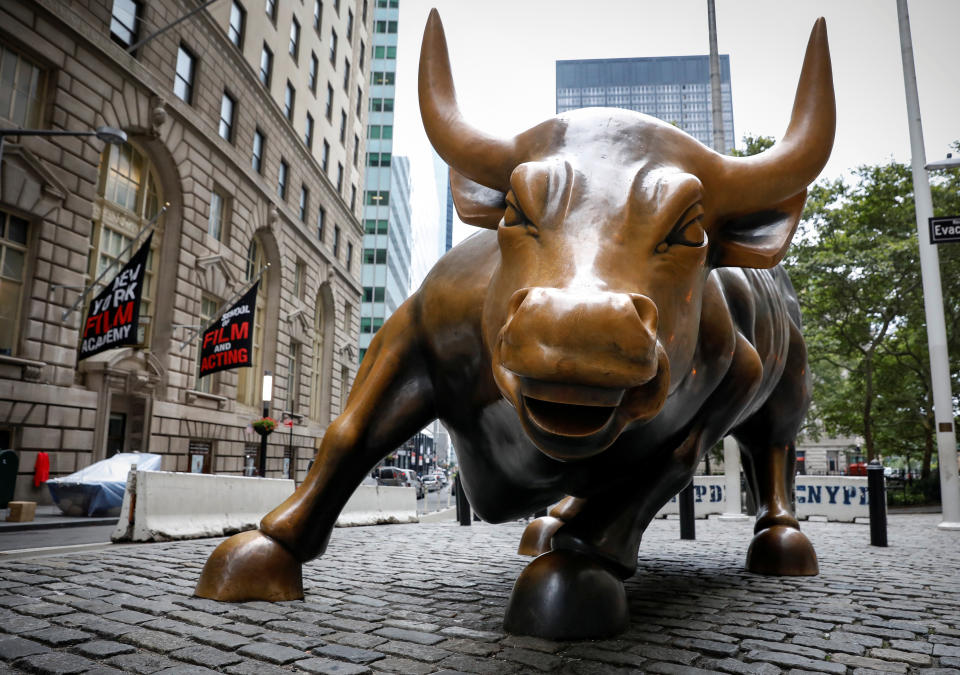‘Pain Trade': Four reasons why the S&P could jump to 3,200
Cue the analyst revisions.
With the S&P 500 (^GSPC) crossing the 3,000 mark last week, which was JPMorgan’s 12-month price target during the first half of 2019, the analysts are raising their target to 3,200, according to a Monday note to clients titled “The Upside Pain Trade to Continue - Equities Climb the Wall of Worry.”

That translates to roughly 6.2% upside from the S&P 500’s current levels of just over 3,013.
There are variety of different forces in play that are creating a more bullish environment for stocks, according to JPMorgan:
Synchronized monetary easing
Federal Reserve Chair Jerome Powell reiterated his dovish signals in commentary on Capitol Hill last week, leaving investors with the expectation of a rate cut at the FOMC’s meeting later this month.
“Six developed market and 13 emerging market central banks are expected to ease in the second half of 2019,” the J.P. Morgan analysts wrote, led by Dubravko Lakos-Bujas, head of U.S. equity strategy and global quantitative research.
Lower interest rates make stocks more attractive.
Easing of trade tensions
JPMorgan expects a “partial trade deal” before the end of 2019, especially as the 2020 presidential election year approaches.
On Monday, President Trump referenced China’s slowing economy in a tweet, saying: “The United States Tariffs are having a major effect on companies wanting to leave China for non-tariffed countries. Thousands of companies are leaving. This is why China wants to make a deal with the U.S., and wishes it had not broken the original deal in the first place.”
Still, the analysts say trade uncertainty “remains the single largest downside risk to our positive view [on stocks].”
No earnings recession
While the analysts acknowledge corporate earnings growth for the rest of the year is expected to be tepid, they don’t see an earnings recession on the horizon, typically defined as back-to-back quarters of negative earnings growth.
“While we expect ongoing margin pressure during 2Q, it is not related to late-cycle dynamics in our view (i.e., rising input costs, declining pricing power, falling demand),” they said. “We expect the margin drag to fade by year-end for most sectors but higher input cost concerns could resurface for some companies in Staples, Consumer, and Transportation.”
Earnings season is underway with Citigroup (C) reporting better-than-expected earnings on Monday. Financial results from JPMorgan Chase (JPM) and Netflix (NFLX) are expected this week.
Corporate stimulus
While JPMorgan is expecting “moderation” in corporate stock repurchases amid the rise in the broader stock market (remember, companies want to buy their own stock at a discount -- just like investors), they say this shouldn’t be interpreted negatively.
“We expect buyback executions to decline slightly to ~$800 billion (from ~$830 billion last year) with companies more focused on boosting dividends,” they wrote. “This view is supported by lower buyback announcements year-to-date vs. 2018.”
Scott Gamm is a reporter at Yahoo Finance. Follow him on Twitter @ScottGamm.
More from Scott:
Morgan Stanley downgrades global stocks, projects ‘poor returns’ over the next year
Gabrielle Rubenstein’s new private equity firm focuses on healthy foods
The earnings picture for 2019 is showing more signs of deterioration
The next rate cut is unlikely to be caused by weak growth, economist explains
What the plunging 10-year Treasury yield says about the economy and stock market
Follow Yahoo Finance on Twitter, Facebook, Instagram, Flipboard, LinkedIn, and reddit.

 Yahoo Finance
Yahoo Finance 
